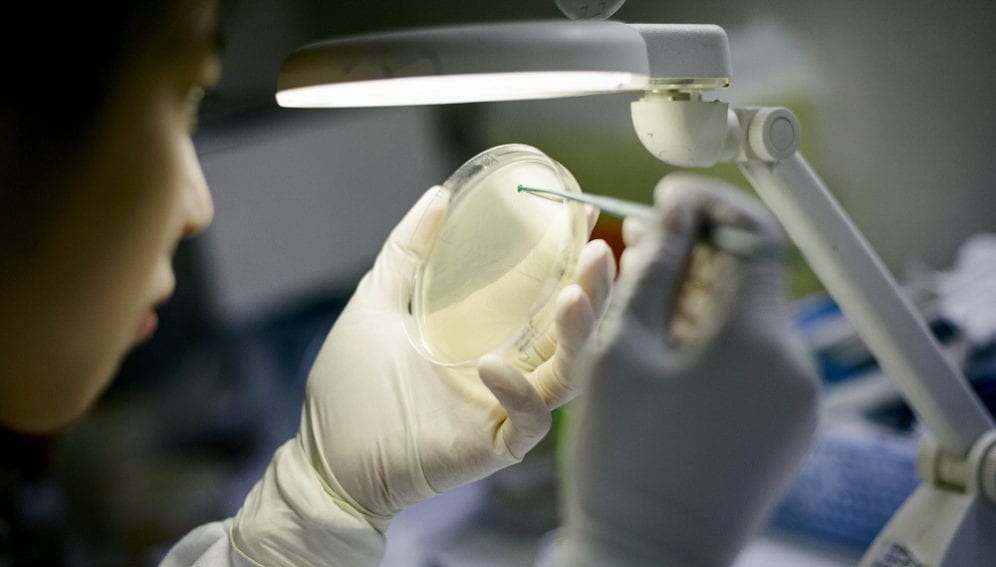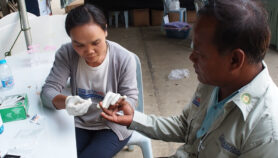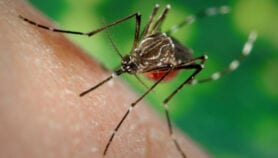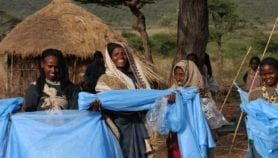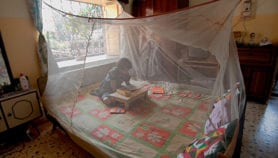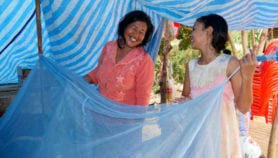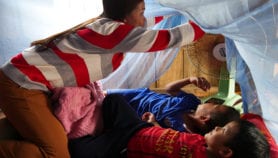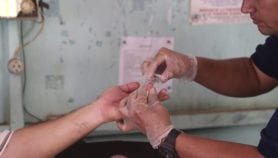By: Paul Icamina
Send to a friend
The details you provide on this page will not be used to send unsolicited email, and will not be sold to a 3rd party. See privacy policy.
[MANILA] International and domestic funding for malaria control will decrease as economies deal with financial woes, warn health specialists from the Asian Development Bank (ADB).
Although development assistance for health has increased by 262 per cent over the last decade, “domestic financing for malaria has only modestly increased from about US$436 million in 2005 to about US$530 million in 2012”, says ADB health specialist Saumya Kailasapathy during the Global Forum on Research and Innovation for Health 2015.
But the global health financing landscape is changing and continuing global economic difficulties cast uncertainty on public spending as well as private sources, Kailasapathy adds.
She notes that growth in health spending has gone flat and may decrease as funding “simply can’t keep up” with increasing populations and pandemic diseases. As a result, “aid recipients will experience keen competition and donor funding will have to shift”.
“The only solution to drug resistance is malaria elimination.”
By Susann Roth of ADB’s health sector group secretariat
Funding, which was increasing in the past, was donor-driven, adds Susann Roth, a public health specialist who also heads ADB’s health sector group secretariat. This is expected to go down and “countries will have to fund malaria programmes from domestic resources”.
“We need to increase and make current funding achieve more, know where and who to target,” Roth says, emphasising that ADB is helping countries raise funds for malaria programmes as part of its increasing investment in healthcare and because malaria is a “public health emergency”.
But this is easier said than done because malaria is prevalent in remote forest areas, affecting highly mobile populations who move in and out of forests into towns and cities, she points out.
It is also difficult to convince policymakers and legislators because malaria is not as “visible” as other diseases, she says. Dengue, for example, is mostly an urban problem: politicians’ children may get dengue but most likely will not get malaria in the cities.
Initial modelling shows long-term investments of about US$24.5 billion from 2016 to 2030 are needed to eliminate malaria in Asia and the Pacific.
Meanwhile, drug resistance is becoming a real issue “because there are no other alternative drugs”, Roth tells SciDev.Net.
Artemisinin-based combination therapies are used in the treatment of malaria caused by P. falciparum. But resistance to artemisinin therapies has been reported in Cambodia, Laos, Myanmar, Thailand and Vietnam. It is mostly likely emerging in Bangladesh too, says Roth.
The WHO has warned that the spread of artemisinin resistance to other regions or its emergence in other parts of the world could trigger a major public health emergency.
The situation is “extremely serious”, says Gerald Keush, associate director of the National Emerging Infectious Diseases Laboratories, Boston University, in an interview. He adds that it is inevitable that resistance will develop as microbes and bacteria mutate constantly, citing response to drugs, wrong dosage, not following the right regimen, counterfeit and substandard anti-malarial drugs have contributed to the emergence of resistance to anti-malaria drugs.
Drug resistance will “turn back” the achievements in malaria control in the past 20 years, especially in Africa, fears Roth. “The only solution to drug resistance is malaria elimination.”
There is no other way but for the health community to develop new drugs and new treatment modalities to deal with the problem says Jaime Montoya, executive director of the Philippine Council for Health Research and Development.
This article has been produced by SciDev.Net's South-East Asia & Pacific desk.


